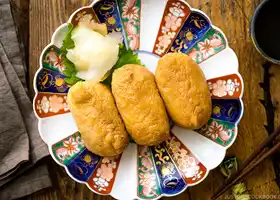Download Stashcook Now. Get the best meal planning app for your family.
Inari Sushi Recipe

Just One Cookbook
Inari Sushi is a traditional sushi of vinegared rice tucked inside sweet and salty deep-fried tofu pockets. Known as Inarizushi in Japan, they are one of the easiest types of sushi to make at home and are beloved by children and adults alike. This vegetarian- and vegan-friendly sushi is perfect for a snack, a picnic lunch, or as part of your sushi dinner platter.
Ingredients
1½ cups uncooked Japanese short-grain white rice
1½ cups water ((cook the rice on the firm side, as we‘ll add more liquid with the sushi vinegar seasoning))
1 piece kombu (dried kelp) ((5 g, 2 x 2 inches, 5 x 5 cm per piece; optional, but it will give a nice aroma))
4 Tbsp rice vinegar (unseasoned)
2 Tbsp sugar
1 tsp Diamond Crystal kosher salt
12 Inari age (seasoned fried tofu pouch)
1 Tbsp toasted white sesame seeds
sushi ginger (gari)
5 shiso leaves
Method
1
2
3
4
5
6
7
8
9
10
11
12
13
14
15
16
17
18
Social
Email:
hello@stashcook.com© Copyright 2025 Stashbox Ltd. All rights reserved.